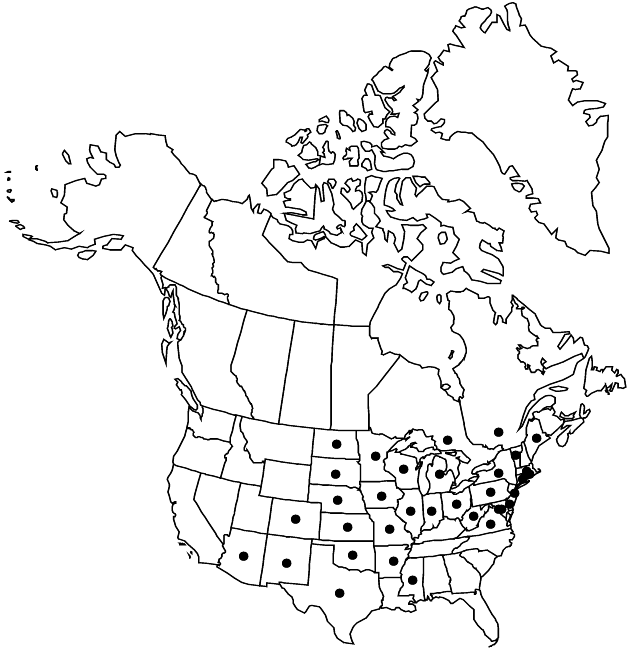Difference between revisions of "Symphyotrichum ericoides var. ericoides"
FNA>Volume Importer |
FNA>Volume Importer |
||
| Line 7: | Line 7: | ||
|name=Aster ciliatus | |name=Aster ciliatus | ||
|authority=Muhlenberg ex Willdenow | |authority=Muhlenberg ex Willdenow | ||
| − | }}{{Treatment/ID/Synonym | + | }} {{Treatment/ID/Synonym |
|name=Aster ericoides var. prostratus | |name=Aster ericoides var. prostratus | ||
|authority=Barton | |authority=Barton | ||
| − | }}{{Treatment/ID/Synonym | + | }} {{Treatment/ID/Synonym |
|name=Aster exiguus | |name=Aster exiguus | ||
|authority=Rydberg | |authority=Rydberg | ||
| − | }}{{Treatment/ID/Synonym | + | }} {{Treatment/ID/Synonym |
|name=Aster hebecladus | |name=Aster hebecladus | ||
|authority=de Candolle | |authority=de Candolle | ||
| − | }}{{Treatment/ID/Synonym | + | }} {{Treatment/ID/Synonym |
|name=Aster multiflorus | |name=Aster multiflorus | ||
|authority=Aiton | |authority=Aiton | ||
| − | }}{{Treatment/ID/Synonym | + | }} {{Treatment/ID/Synonym |
|name=Aster multiflorus var. ciliatus | |name=Aster multiflorus var. ciliatus | ||
|authority=Fernald | |authority=Fernald | ||
| − | }}{{Treatment/ID/Synonym | + | }} {{Treatment/ID/Synonym |
|name=Aster multiflorus var. exiguus | |name=Aster multiflorus var. exiguus | ||
|authority=Kuntze | |authority=Kuntze | ||
| − | }}{{Treatment/ID/Synonym | + | }} {{Treatment/ID/Synonym |
|name=Aster multiflorus var. prostratus | |name=Aster multiflorus var. prostratus | ||
|authority=(Kuntze) G. L. Nesom | |authority=(Kuntze) G. L. Nesom | ||
| − | }}{{Treatment/ID/Synonym | + | }} {{Treatment/ID/Synonym |
|name=Aster polycephalus | |name=Aster polycephalus | ||
|authority=unknown | |authority=unknown | ||
| − | }}{{Treatment/ID/Synonym | + | }} {{Treatment/ID/Synonym |
|name=Aster scoparius | |name=Aster scoparius | ||
|authority=unknown | |authority=unknown | ||
| − | }}{{Treatment/ID/Synonym | + | }} {{Treatment/ID/Synonym |
|name=Symphyotrichum ericoides var. prostratum | |name=Symphyotrichum ericoides var. prostratum | ||
|authority=unknown | |authority=unknown | ||
| Line 52: | Line 52: | ||
|elevation=30–2200 m | |elevation=30–2200 m | ||
|distribution=Man.;Ont.;Que.;Ariz.;Ark.;Colo.;Conn.;Del.;D.C.;Ill.;Ind.;Iowa;Kans.;Maine;Md.;Mass.;Mich.;Minn.;Miss.;Mo.;Nebr.;N.J.;N.Mex.;N.Y.;N.Dak.;Ohio;Okla.;Pa.;R.I.;S.Dak.;Tex.;Vt.;Va.;W.Va.;Wis.;Mexico (Coahuila;Nuevo León). | |distribution=Man.;Ont.;Que.;Ariz.;Ark.;Colo.;Conn.;Del.;D.C.;Ill.;Ind.;Iowa;Kans.;Maine;Md.;Mass.;Mich.;Minn.;Miss.;Mo.;Nebr.;N.J.;N.Mex.;N.Y.;N.Dak.;Ohio;Okla.;Pa.;R.I.;S.Dak.;Tex.;Vt.;Va.;W.Va.;Wis.;Mexico (Coahuila;Nuevo León). | ||
| − | |discussion=<p>Variety ericoides is introduced in Quebec and possibly also in Tennessee. It was treated as a subspecies with two weakly separated varieties distinguished by stem and indument traits by A. G. Jones (1978). Plants with sparsely strigose stems with the hairs spreading to ascending were treated as var. ericoides. Plants with densely divaricate-hirsute stems and slightly smaller heads were treated as var. prostratum. Both indument types can be found on the same stem and there is considerable overlap in the range of values of floret traits. Diploids are found throughout the range; tetraploids occur on the Great Plains. The following forms are not recognized here: Aster ericoides forma prostratus (Kuntze) Fernald and forma exiguus (Fernald) Fernald.</p> | + | |discussion=<p>Variety ericoides is introduced in Quebec and possibly also in Tennessee. It was treated as a subspecies with two weakly separated varieties distinguished by stem and indument traits by A. G. Jones (1978). Plants with sparsely strigose stems with the hairs spreading to ascending were treated as <i></i>var.<i> ericoides</i>. Plants with densely divaricate-hirsute stems and slightly smaller heads were treated as <i></i>var.<i> prostratum</i>. Both indument types can be found on the same stem and there is considerable overlap in the range of values of floret traits. Diploids are found throughout the range; tetraploids occur on the Great Plains. The following forms are not recognized here: <i>Aster</i> ericoides forma prostratus (Kuntze) Fernald and forma exiguus (Fernald) Fernald.</p> |
|tables= | |tables= | ||
|references= | |references= | ||
| Line 76: | Line 76: | ||
|publication year= | |publication year= | ||
|special status= | |special status= | ||
| − | |source xml=https://jpend@bitbucket.org/aafc-mbb/fna-data-curation.git/src/ | + | |source xml=https://jpend@bitbucket.org/aafc-mbb/fna-data-curation.git/src/8f726806613d60c220dc4493de13607dd3150896/coarse_grained_fna_xml/V19-20-21/V20_1111.xml |
|tribe=Asteraceae tribe Astereae | |tribe=Asteraceae tribe Astereae | ||
|genus=Symphyotrichum | |genus=Symphyotrichum | ||
Revision as of 15:17, 18 September 2019
Plants densely to diffusely colonial; strongly rhizomatous, not cormoid. Stems 1, decumbent to erect. Involucres cylindro-campanulate (fresh). 2n = 10, 20.
Phenology: Flowering Aug–Oct(–Nov).
Habitat: Open, dry to moist, well drained, sandy or gravelly, disturbed soils, prairies, glades, dunes, fields, shores, railroad rights-of-way, roadsides
Elevation: 30–2200 m
Distribution

Man., Ont., Que., Ariz., Ark., Colo., Conn., Del., D.C., Ill., Ind., Iowa, Kans., Maine, Md., Mass., Mich., Minn., Miss., Mo., Nebr., N.J., N.Mex., N.Y., N.Dak., Ohio, Okla., Pa., R.I., S.Dak., Tex., Vt., Va., W.Va., Wis., Mexico (Coahuila, Nuevo León).
Discussion
Variety ericoides is introduced in Quebec and possibly also in Tennessee. It was treated as a subspecies with two weakly separated varieties distinguished by stem and indument traits by A. G. Jones (1978). Plants with sparsely strigose stems with the hairs spreading to ascending were treated as var. ericoides. Plants with densely divaricate-hirsute stems and slightly smaller heads were treated as var. prostratum. Both indument types can be found on the same stem and there is considerable overlap in the range of values of floret traits. Diploids are found throughout the range; tetraploids occur on the Great Plains. The following forms are not recognized here: Aster ericoides forma prostratus (Kuntze) Fernald and forma exiguus (Fernald) Fernald.
Selected References
None.